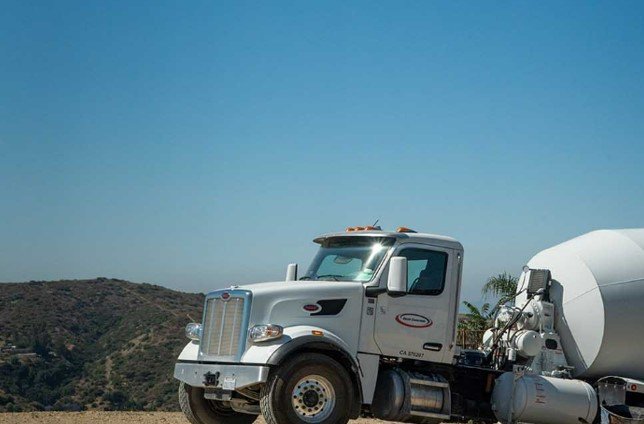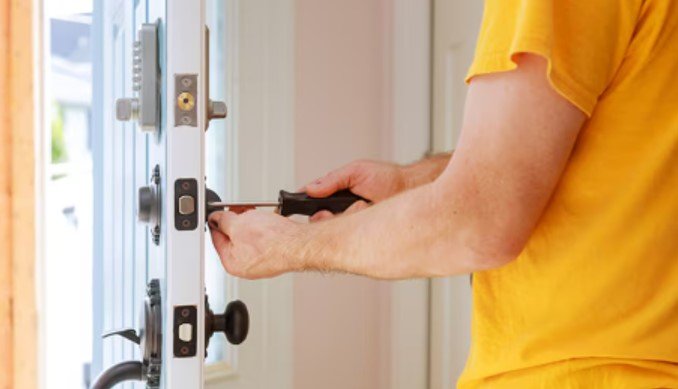New Storm, New Danger For Mountain Communities Watching For Roof Collapses And Flooding

Michelle Salas was digging trenches around her Running Springs home Thursday to keep it from flooding as the next storm nears, likely bringing
several inches of rain
.
“I’ve never been one to sit around and wait for help,” Salas said. “That’s pretty much how mountain people do it.”
Still, Salas said, the last series of storms brought such a massive amount of snow that her neighbors can’t be blamed for not being prepared.
Now, while hundreds of volunteers and emergency workers continue toiling to free residents from snow-bound homes, a new, warmer storm moving into Southern California is bringing new dangers to mountain areas: flooding and the potential for more collapsed roofs from the added weight of wet snow.
Why even this smaller storm is so concerning
San Bernardino County Fire Battalion Chief Mike McClintock said even though the bulk of the storm seems likely to miss Southern California mountain communities, a few inches of rain on top of several feet of snow still on the ground and on homes could cause major damage.
Sheriff’s Department Investigating 13 Deaths In Mountain Communities
-
The San Bernardino County Sheriff’s Department said it was investigating 13 deaths since blizzard conditions hit the mountain areas two weeks ago. In a
statement
, the sheriff’s department said only one of the deaths, in a traffic accident, has been directly linked to the storm. -
“Many of the deceased had significant medical histories or chronic conditions,” the statement reads. Still, the department noted that the findings are preliminary.
-
The ages of the deceased range from 33 to 93 years old.
“Typically people are used to water flowing in specific ways through their property and this is going to be a little different because we have so much snow buildup,” McClintock said.
He urged people to get snow cleared from around their homes and from roofs and as soon as possible, noting that the county is
reimbursing residents
up to $500 for snow removal.
San Bernardino County is offering up to $500 in reimbursement to mountain residents and business owners to cover snow removal costs on private driveways, walkways, and roads.
For requirements and to apply for the Snow Removal Reimbursement Program at https://t.co/vhvvmgQJdd pic.twitter.com/P9pw2Lf9ha
— SBCounty (@SBCounty) March 8, 2023
Signs of a roof in trouble

Snow outside the home of Running Springs resident Chris Bush, shared on Friday, March 3, 2023.
The likelihood of rain on top of snow could strain rooftops, some of which
already buckled
under the weight of relatively lighter — but deep — snow from the late February storms.
“Two feet of fresh snow doesn’t weigh too much,” said
Gregg Brandow
, a structural engineer and professor at the University of Southern California. “But 2 feet of snow that’s been on your roof quite a while, it can weigh quite a bit.”
What to watch for
-
USC’s Gregg Brandow said signs that your roof may have suffered structural damage include:
- doors, windows or cabinets not opening normally
- leaks
- a visibly sagging roof (though this isn’t always obvious if covered up by a ceiling)
- creaking or groaning sounds coming from the roof
-
If you live in the San Bernardino Mountains and fear your roof could collapse, the Red Cross is operating
two emergency shelters
for residents:- Redlands East Valley High School, 31000 E Colton Ave, Redlands, CA 92374
- Rim of the World High School, 27400 CA-18, Lake Arrowhead
-
Damage assessment
The county is collecting information about structural damage caused by the storm in order to make requests for state and federal disaster assistance. You can fill out an initial damage assessment survey
here
.
Rain can also get trapped by what are known as “
ice dams
” — formed when snow melts and then refreezes — adding extra weight to rooftops.
Running Springs resident Chris Bush said the roof of his 1977 home was showing major damage, including leaks and cracks, after bearing 6 feet of snow from the recent series of snow.

Leaks and cracks have sprung up in the roof of Chris Bush’s 1977 home in Running Springs since a series of storms dumped around 10 feet of snow on the San Bernardino mountain community in late February.
San Bernardino County
building codes
require roofs in most mountain communities to withstand 75 pounds per square inch of snow. But older homes may not have been built to those standards. Plus, the amount of snow — close to 10 feet in some areas — far exceeds the norm for Southern California mountains.
“Someplace like Mammoth Mountain has very, very heavy snow load requirements for the design of any structures,” Brandow said. “Our local mountains have a lot less of a requirement, but they do require that you design for snow.”
A major test of infrastructure
Still, even in places that typically see lots of snow, the exceptionally wet winter is testing local infrastructure. South Lake Tahoe Fire Marshall Kim George said several roofs had caved in there and she expected more with the rain that’s also set to hit Northern California in the coming days.
That city’s building code requires roofs to withstand 150 pounds per square inch — double the amount required in the San Bernardino Mountains — and yet this winter’s precipitation is topping that.
“We haven’t really had to think about it for years and years. And now all of a sudden it’s creating a problem,” George said.
Shoveling snow from roofs is dangerous. Equipment and labor scarce
Climbing up onto a roof to clear snow involves a variety of dangers, from falling ice and snow to falling humans. George said her South Lake Tahoe department had responded to numerous calls lately of people who had fallen off rooftops while trying to clear snow.
One solution is a device called a roof rake — a long pole that can be maneuvered from the ground. But they’ve become scarce in some areas because of high demand.
Unless you have an A-frame house, chances are you’re gonna have some damage.
— Michelle Salas
In the San Bernardino Mountains, Salas said the melting snow had gotten too hard and heavy to remove with something like a roof rake. She said she and her daughter, who both rock climb, had initially tried to rig up a rope across their rooftop to scrape the snow down and off the roof. But it didn’t work because the snow had already iced over.
“So you have to go up there with the shovel,” she said.
Salas said that Thursday morning, as she was preparing to take her son to work shoveling snow, she watched her neighbor’s deck collapse suddenly under the weight of the snow piled high there.
“Unless you have an A-frame house, chances are you’re gonna have some damage,” Salas said. Her son had been working for two days to clear a single home of snow, meanwhile fielding a barrage of calls every night from people desperate for help with removing snow.
“He just answers them and tells them ‘I can’t do it’ just because, you know, he doesn’t want somebody to say something bad on social media saying, ‘Oh, you never responded.'”
Salas said many homes in her community are still largely buried in snow and some residents may have given up on trying to dig them out for now.
“I think a lot of people have just taken off just because it was just so scary,” she said.
What questions do you have about the weather we’re experiencing?
A massive winter storm is hitting Southern California. We’re here to answer your questions.







